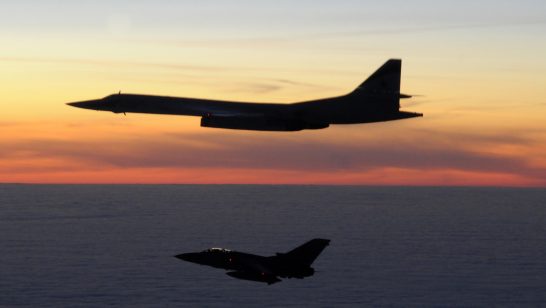
European Leaders Endorse Call to Reactivate the Cooperative Airspace Initiative
Whilst the NATO-Russia Council meeting held in April 2016 had a partial, but nevertheless welcome, focus on transparency, risk reduction and military to military communication, it did not cover a crucial security measure previously operated by the NATO-Russia Council itself: The Cooperative Airspace Initiative.
In this short policy brief ELN Research Fellow Thomas Frear argues that The Cooperative Airspace Initiative (CAI) contained many mechanisms, including shared civilian and military air traffic control data, that would make the shared area a much safer place for civilians. Whilst there are some associated security concerns to be addressed, it would be a simple matter to begin to re-utilise the CAI’s software. The policy brief also makes the case that it may be conceivable to avoid gridlock within the NATO-Russia Council by removing the CAI from its remit and instituting it as a stand-alone measure.
The increasingly unstable environment in Europe, characterised by the simmering conflict in Ukraine, the ongoing flight of refugees into Europe from warzones on the continent’s periphery, and the action-reaction dynamic of military exercises between Russia and NATO, is rife with opportunity for miscalculation. Whether as a result of an accidental collision involving military aircraft or a misunderstanding of another actor’s intentions, in particular in the aftermath of a fatal incident, there is a real possibility that political leaders will find themselves reacting to events rather than shaping them.
In the current climate it is not difficult to envisage a fatal incident being interpreted as an ambiguous, but nevertheless deliberate, hostile action undertaken by ‘the other’, thus requiring an appropriate response. Once this dynamic is in place it is very difficult to defuse, with political leaders drawn into rounds of successive and self-perpetuating escalation. It is thus crucial that political leaders take all possible precautions to minimise risk and the scope for misunderstanding when considering and implementing military actions.
The real risk that military aviation poses to civilian airliners must be taken into consideration, it is thus imperative to make use of those systems that reduce risk and avoid any further escalation.
The opinions articulated above represent the views of the author(s), and do not necessarily reflect the position of the European Leadership Network or any of its members. The ELN’s aim is to encourage debates that will help develop Europe’s capacity to address the pressing foreign, defence, and security challenges of our time.


